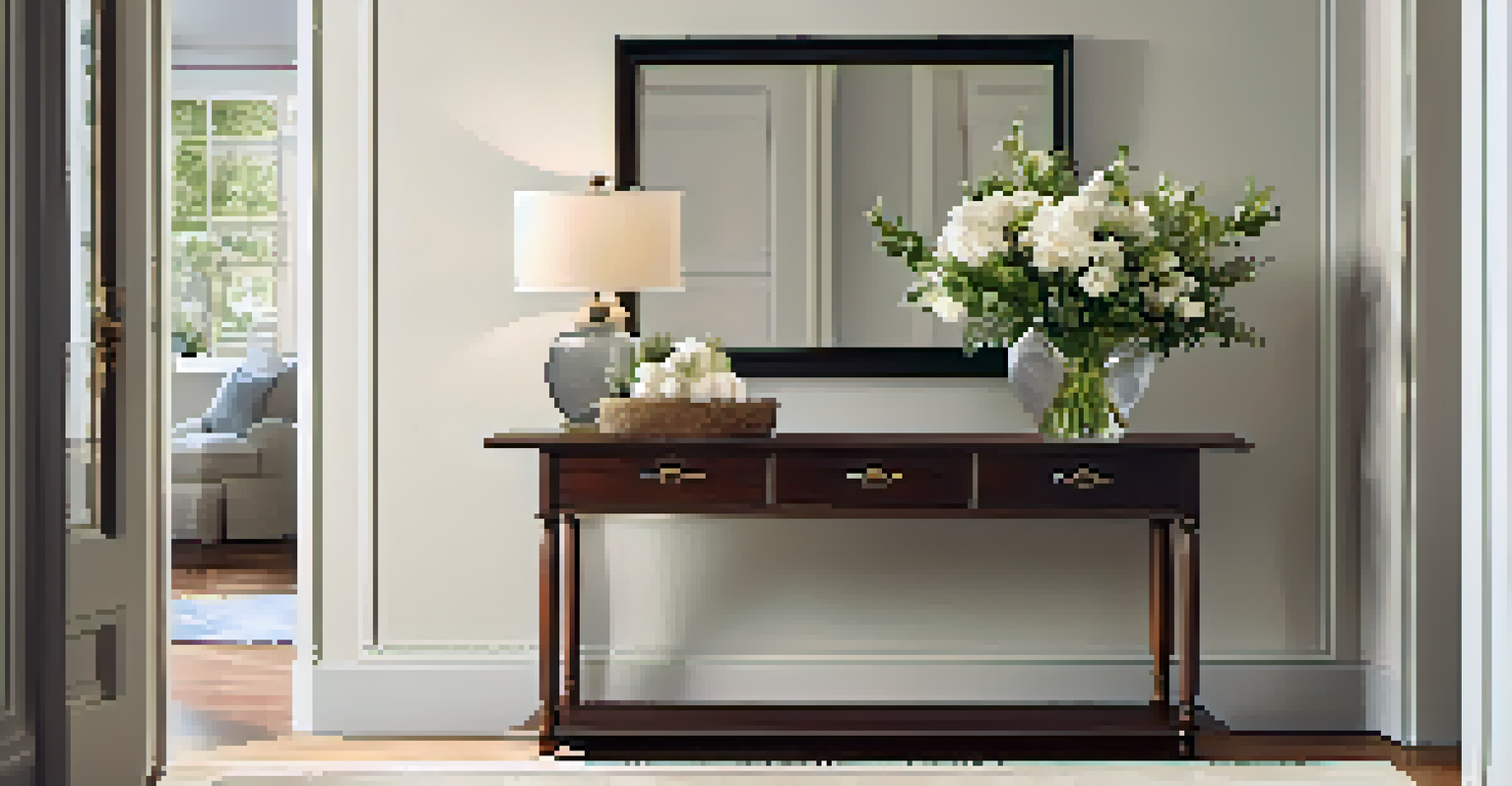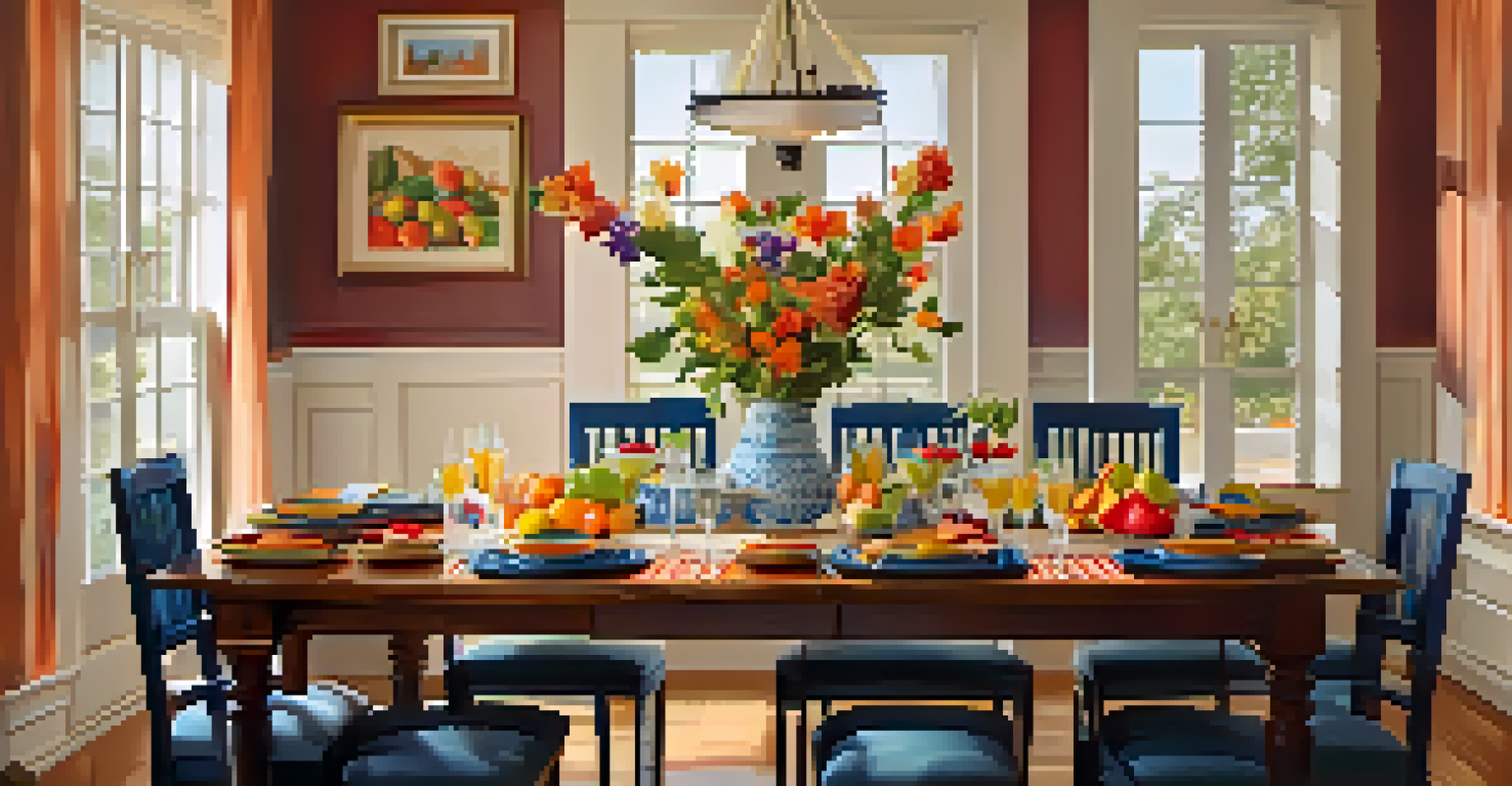Staging to Evoke Emotions: Creating Buyer Connections

Understanding Emotional Connections in Home Buying
When it comes to buying a home, emotions often outweigh logic. Buyers envision their future in a space, and the right staging can amplify those feelings. It's like flipping through a magazine; a beautifully staged home draws you in and makes you dream.
A home is not just a place, it's a feeling.
These emotional connections can trigger a sense of belonging and comfort, which are key in decision-making. A warm, inviting atmosphere can help buyers picture themselves living there, creating a personal stake in the property. This emotional resonance is what makes staging an essential part of real estate.
Ultimately, understanding the emotional aspect of home buying allows sellers to present their properties in a way that speaks to potential buyers' hearts. By tapping into these feelings, sellers can create lasting impressions that influence buying decisions.
The Power of First Impressions in Home Staging
First impressions matter, especially in real estate. A buyer's initial reaction often sets the tone for the rest of the viewing experience. Think of it like meeting someone new; that first moment can determine whether you want to get to know them better.

In staging, this means presenting a home that feels welcoming and visually appealing right from the entrance. Simple touches like fresh flowers, a clean entryway, or well-placed lighting can make all the difference. They create an inviting atmosphere that encourages buyers to explore further.
Emotions Drive Home Buying Decisions
Emotional connections play a crucial role in home buying, making staging essential to resonate with potential buyers.
By prioritizing first impressions, sellers can ensure that their home stands out in a crowded market. A well-staged home that captures attention immediately increases the likelihood of a deeper emotional connection.
Creating a Narrative Through Staging
Staging is not just about arranging furniture; it's about telling a story. Each room should convey a lifestyle that resonates with potential buyers, helping them envision their own lives within the space. It's similar to storytelling; the more engaging the narrative, the more invested the audience becomes.
First impressions are the most lasting.
For instance, a cozy reading nook can evoke feelings of relaxation, while a vibrant dining area can spark visions of family gatherings. These narratives help buyers connect emotionally, making the home feel like a place where memories can be created.
By crafting a compelling story through staging, sellers can create a sense of possibility that lingers long after the viewing. This narrative quality is what elevates a property from merely being a house to becoming a potential home.
The Importance of Color in Evoking Emotions
Color plays a crucial role in how we feel about a space. Different hues can evoke various emotions, from calmness to excitement. Think about how a bright yellow can energize a room, while soft blues promote tranquility.
In staging, using a thoughtful color palette can significantly impact the buyer's emotional response. Neutral tones can create a blank canvas, allowing buyers to envision their own style, while strategic pops of color can highlight key features and draw attention.
First Impressions Matter in Staging
Creating a welcoming atmosphere from the entrance sets the tone for buyers, enhancing their overall experience.
By understanding the psychological effects of color, sellers can enhance the emotional appeal of their homes. A well-chosen color scheme not only beautifies the space but also fosters an emotional connection with potential buyers.
Incorporating Personal Touches in Staging
While staging should appeal to a broad audience, incorporating personal touches can add warmth and character. Items like family photos, unique art pieces, or handcrafted decor can create an inviting atmosphere that feels lived-in yet curated.
These personal touches can help buyers connect on a deeper level, making them feel that the house is more than just a property; it’s a home. However, it’s important to strike a balance—too many personal items can distract or make it hard for buyers to envision their own lives in the space.
Ultimately, the right mix of personalization in staging can enhance emotional connections, allowing buyers to see themselves thriving in the home. A staged space should feel like a welcoming invitation rather than a sterile showroom.
Lighting: Setting the Mood for Emotional Engagement
Lighting is a powerful tool in creating the right mood in a staged home. Natural light can make a space feel airy and inviting, while soft, warm lighting can create a cozy atmosphere. Imagine walking into a room bathed in golden light; it instantly evokes feelings of comfort and safety.
In staging, the strategic use of lighting can highlight a home's best features, drawing attention to architectural details or cozy corners. Dimmer switches, table lamps, and well-placed windows can all contribute to a more appealing ambiance.
Multi-Sensory Appeal Enhances Staging
Incorporating scent and sound alongside visuals creates a holistic experience that fosters deeper emotional connections.
By setting the right mood through lighting, sellers can enhance the emotional experience of potential buyers. The right lighting can transform a house into a home, making it easier for buyers to forge connections.
The Final Touch: Scent and Sound in Staging
While visuals are important, don't underestimate the power of scent and sound in creating an emotional connection. A pleasant aroma, like freshly baked cookies or a hint of lavender, can evoke feelings of warmth and nostalgia. It’s like walking into a friend’s home; the familiar scents make you feel instantly at ease.
Sound also plays a role—soft music in the background can create a relaxed atmosphere, allowing buyers to envision themselves in the space. Think of these elements as the finishing touches that round out the sensory experience of a home.

By incorporating scent and sound into staging, sellers can create a multi-sensory experience that lingers in buyers' minds. This holistic approach to staging can foster deeper emotional connections and elevate the overall appeal of the property.